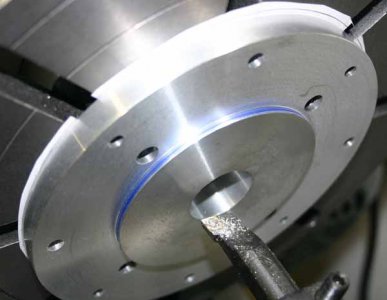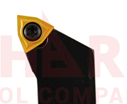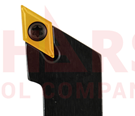- Joined
- Jan 17, 2017
- Messages
- 16
Gentlemen -
I have QCTP from LMS and Shars 1/2" indexable carbide cutters for my Jet 920.
I am working to get things set up enough to make a Pitkin donut.
In the interest of practice and check-out, I mounted a 4 x 4 x 1/2" chunk of steel bar of unknown pedigree (liberated from my daughter's welding class scrap) and took several light facing cuts with repeatable, sad results. Moderate speed (didn't write it down, maybe 400 RPM)
Used cutting oil, tried different cutter shapes and angles, fresh inserts. No joy.
Forum posts seem to indicate that I'm turning too slow.
Mounted the 3/4" piece I intend to use for the donut (also of unknown alloy) and spun it at 1000 RPM - better, smoother finish and blue curlies, until the last inch of diameter. I'm assuming it is heating up and affecting the cut.
Tried 2000 RPM (most I can make) and got burning swarf. Didn't like that so much.
Thoughts?
Is it junk Chinese inserts, my tools not suited for carbide, or am I doing something wrong?
neal
I have QCTP from LMS and Shars 1/2" indexable carbide cutters for my Jet 920.
I am working to get things set up enough to make a Pitkin donut.
In the interest of practice and check-out, I mounted a 4 x 4 x 1/2" chunk of steel bar of unknown pedigree (liberated from my daughter's welding class scrap) and took several light facing cuts with repeatable, sad results. Moderate speed (didn't write it down, maybe 400 RPM)
Used cutting oil, tried different cutter shapes and angles, fresh inserts. No joy.
Forum posts seem to indicate that I'm turning too slow.
Mounted the 3/4" piece I intend to use for the donut (also of unknown alloy) and spun it at 1000 RPM - better, smoother finish and blue curlies, until the last inch of diameter. I'm assuming it is heating up and affecting the cut.
Tried 2000 RPM (most I can make) and got burning swarf. Didn't like that so much.
Thoughts?
Is it junk Chinese inserts, my tools not suited for carbide, or am I doing something wrong?
neal
Last edited:



